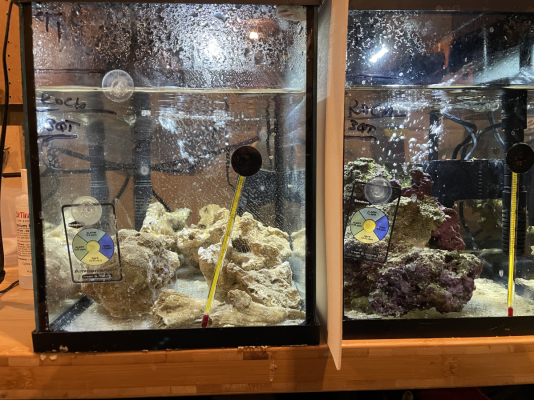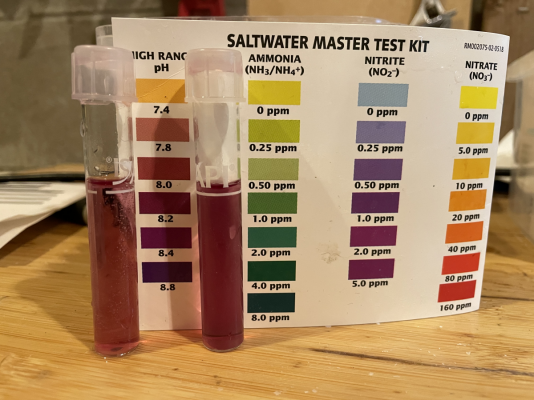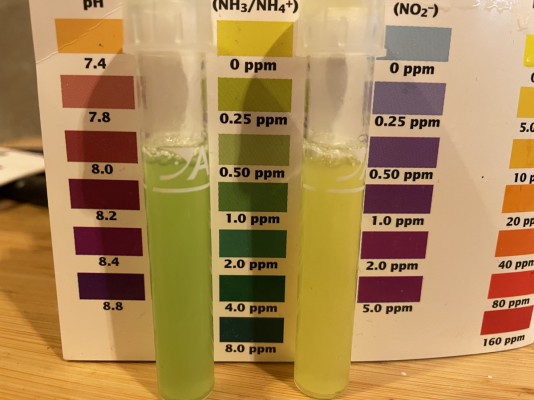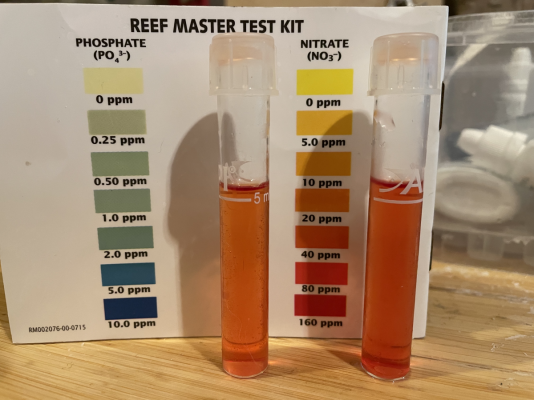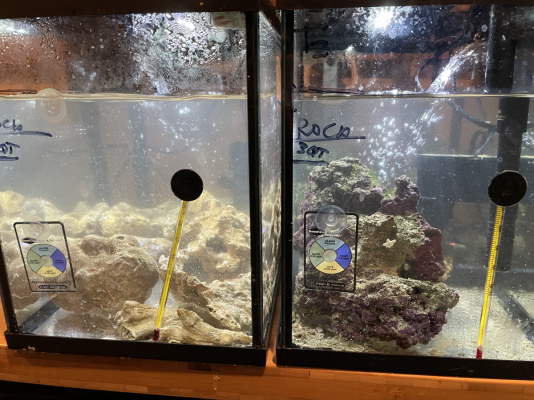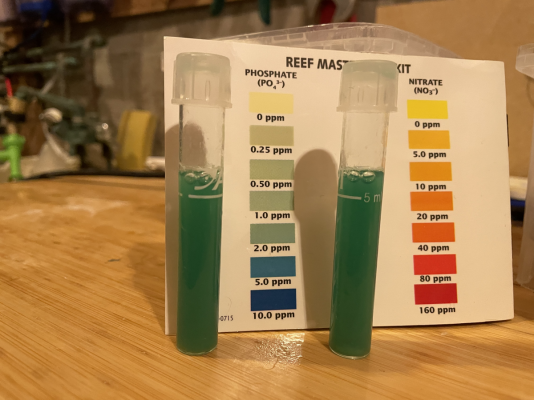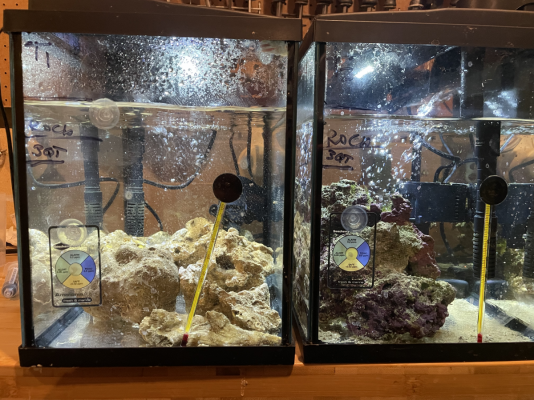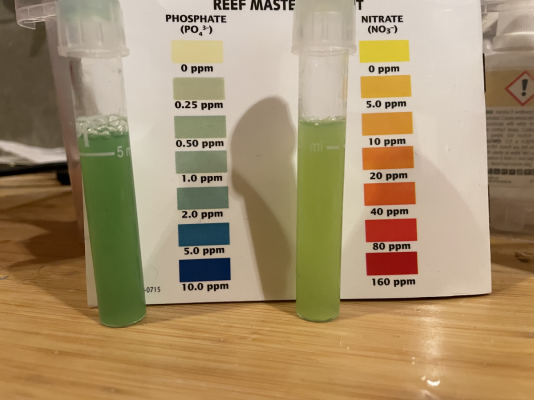- Joined
- Dec 28, 2016
- Messages
- 22,742
- Reaction score
- 21,911
Today's results - End of Experiment 2.
Interestingly enough - when the formerly 'Dark' Rock was 'Lit' and the formerly 'Lit' rock was left 'dark' - there was no real difference - except BOTH sets processed ammonia more quickly - than before - but the Dark (formerly lit) tank - did it one day faster. As @Lasse suggested - will try the rest of the experiments 'in the dark'
My thoughts go something like this.
The rock biofilm begins to change the minute you move the rock to a new environment. Some life forms die, some leave the rock, others grow to fill the new space. The effects I would wonder about include, chemical and biological.
Chemical. Will the rock chemical emissions effect my experiment measurements? Will NH3 be produced by the rock irrespective of what is added?
Biological. Is the rock ammonia consumption bacteria or algae dominated? How does an algae dominated biofilm behave in the dark?
Interestingly enough - when the formerly 'Dark' Rock was 'Lit' and the formerly 'Lit' rock was left 'dark' - there was no real difference - except BOTH sets processed ammonia more quickly - than before - but the Dark (formerly lit) tank - did it one day faster. As @Lasse suggested - will try the rest of the experiments 'in the dark'






